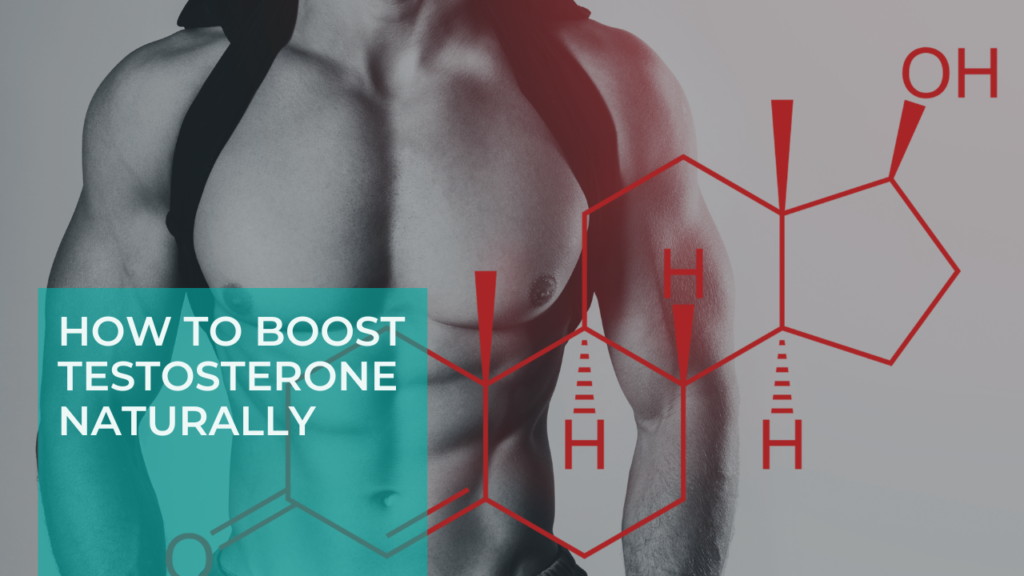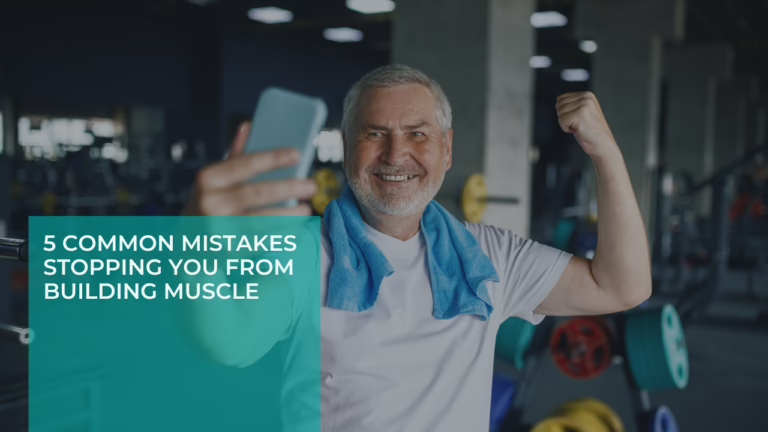How to Boost Testosterone Naturally
Testosterone—it’s not just a hormone; it’s the powerhouse behind masculinity, vitality, and overall well-being in men. As we navigate through life, especially as we hit our 30s and 40s, understanding the significance of testosterone becomes increasingly crucial. So, let’s dive into the science-backed reasons why testosterone is essential for men’s health and how its levels can impact various aspects of our lives.

The Basics of Testosterone
Before we delve deeper, let’s get to know our hormonal hero better. Testosterone is primarily produced in the testes, although the adrenal glands also churn out a small amount. It plays a pivotal role in developing and maintaining male characteristics, such as muscle mass, bone density, facial and body hair, and sex drive.
As men age, testosterone levels naturally start to decline. Research indicates that testosterone levels decrease by about 1% per year after age 30. This gradual decline can have significant implications for men’s health and well-being.
One of the most noticeable effects of declining testosterone levels is the loss of muscle mass and strength. Testosterone helps regulate muscle protein synthesis, the process by which muscles grow and repair themselves. With lower testosterone levels, maintaining muscle mass becomes more challenging, decreasing strength and potential frailty.
Testosterone also plays a crucial role in maintaining bone density. As men age and testosterone levels decline, the risk of osteoporosis and fractures increases. Studies have shown a direct correlation between low testosterone levels and decreased bone mineral density, particularly in older men.
Perhaps one of the most well-known functions of testosterone is its impact on sexual health and libido. While it’s typical for sexual desire to fluctuate throughout life, low testosterone levels can significantly dampen libido and lead to erectile dysfunction in some cases. Research suggests that testosterone replacement therapy can improve sexual function in men with low testosterone levels.
Testosterone doesn’t just affect physical health; it also influences mental well-being. Low testosterone levels have been linked to fatigue, low energy levels, and mood disturbances, including irritability and depression. Rebalancing testosterone levels through lifestyle changes or medical intervention can help improve energy levels and overall mood.
Maintaining Healthy Testosterone Levels
Now that we understand the vital role of testosterone in men’s health, how can we ensure optimal levels, especially as we age? While genetics and age play significant roles in testosterone production, there are steps men can take to support healthy testosterone levels:

Embrace the Power of Compound Movements
Instead of just hitting the gym for any old workout, focus on compound movements. These exercises work multiple muscle groups simultaneously, like squats, deadlifts, and bench presses. Compound movements not only build strength but also send your testosterone levels soaring. So, ditch the isolation exercises and opt for significant, badass movements that’ll supercharge your testosterone production.
- Incorporate compound exercises into your workout routine at least two to three times per week. Aim for exercises like squats, deadlifts, lunges, bench presses, pull-ups, and rows.
- Focus on lifting heavy weights properly to maximize muscle activation and testosterone release.
- Prioritize full-body workouts that target multiple muscle groups simultaneously for maximum efficiency.
- Mix up your routine regularly to prevent plateaus and keep your muscles challenged.

Harness the Testosterone-Boosting Magic of Oysters
ep, you heard it right. Oysters aren’t just an aphrodisiac; they’re a testosterone-boosting powerhouse. These slippery little suckers are packed with zinc, a mineral that’s essential for testosterone production. So, next time you feel adventurous at the seafood counter, grab some oysters and treat your taste buds to a testosterone-boosting feast.
- Include zinc-rich foods like oysters, beef, chicken, pumpkin seeds, and lentils in your diet regularly.
- Experiment with different oyster recipes, whether raw, grilled, baked, or fried, to find your favorite way to enjoy this testosterone-boosting delicacy.
- Consider taking a zinc supplement if you struggle to meet your daily requirements through diet alone, but consult a healthcare professional before starting any new supplement regimen.

Unleash Your Inner Zen Warrior
Stress is the ultimate testosterone killer, but you can fight back with the power of Zen. Incorporate stress-reduction techniques like mindfulness meditation, yoga, or tai chi into your daily routine. These ancient practices may seem woo-woo to some. Still, they’re scientifically proven to lower stress hormones and boost testosterone levels. So, channel your inner zen warrior and conquer stress like a boss.
- Dedicate daily time to practicing mindfulness meditation, yoga, or tai chi to reduce stress and promote relaxation.
- Create a calming environment for your practice by finding a quiet space, dimming the lights, and playing soothing music or nature sounds.
- Experiment with relaxation techniques to find what works best for you, whether deep breathing exercises, progressive muscle relaxation, or guided imagery.

Dive Into the Depths of REM Sleep
It’s not just about getting enough shut-eye but diving deep into REM sleep. Rapid Eye Movement (REM) sleep is when your body produces most of its testosterone. So, prioritize quality sleep by creating a sleep sanctuary, banning screens before bed, and indulging in bedtime rituals that signal your body to power down and recharge.
- Prioritise sleep hygiene by establishing a consistent bedtime routine and sleep schedule, even on weekends.
- Create a comfortable sleep environment by investing in a supportive mattress, blackout curtains, and a white noise machine.
- Limit screen exposure and stimulating activities at least an hour before bedtime to promote relaxation and improve sleep quality.
Shed Fat, Unleash Testosterone
Forget crash diets and extreme weight loss gimmicks. Instead, focus on shedding excess body fat through sustainable lifestyle changes. Excess body fat, especially around the midsection, is like kryptonite for testosterone levels. So, clean up your diet, hit the gym, and watch as your testosterone levels skyrocket along with your confidence and vitality.
- Focus on creating a sustainable calorie deficit through diet and exercise to promote fat loss while preserving muscle mass.
- Incorporate strength training into your workout routine to build and maintain lean muscle mass, which can help boost metabolism and support fat loss.
- Choose whole, nutrient-dense foods like fruits, vegetables, lean proteins, and healthy fats to fuel your body and support overall health.
- Monitor portion sizes and be mindful of calorie intake to ensure you’re consuming the appropriate amount of food for your goals.
Conclusion
Testosterone is more than just a hormone; it’s a cornerstone of men’s health and vitality. As we age, understanding the importance of testosterone and taking proactive steps to support healthy levels can help us maintain strength, vitality, and overall well-being well into our 30s, 40s, and beyond. By prioritizing lifestyle factors that support testosterone production, we can optimise our health and enjoy life to the fullest.
Want learn more?
Download my vital checklist today “Boost Testosterone: 10 Surprising Foods to Cut from Your Diet” and take charge of your health and vitality! Type your email below and I’ll send my checklist instantly.
Sources and Further Reading
- Wu FC, Tajar A, Beynon JM, et al. Identification of late-onset hypogonadism in middle-aged and elderly men. N Engl J Med. 2010;363(2):123-35. doi:10.1056/NEJMoa0911101.
- Orwoll E, et al. “Osteoporotic Fractures in Men Study Group. Testosterone and estradiol among older men.” Journal of Clinical Endocrinology and Metabolism. 2006. https://doi.org/10.1016/j.psyneuen.2016.06.009
- Fink HA, Ewing SK, Ensrud KE, et al. Association of testosterone and estradiol deficiency with osteoporosis and rapid bone loss in older men. J Clin Endocrinol Metab. 2006;91(10):3908-15. doi:10.1210/jc.2006-0173.
- Traish AM. “Testosterone therapy in men with testosterone deficiency: Are the benefits and cardiovascular risks real or imagined?” American Journal of Physiology-Heart and Circulatory Physiology. 2016. https://doi.org/10.1152/ajpregu.00174.2016.


